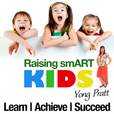
Summary: Over the next several weeks, we'll be taking a closer look at each of the 8 intelligences as proposed by Howard Gardner. Today's topic is Visual-Spatial Intelligence. Researching multiple intelligences on the web led me to a blog entitled, Seven Intelligences of Accelerated Learning by Adam Sicinski. In his post, Adam shares specific study strategies for each of the intelligences. If you want to get a jump start you can read Adam's full post. For the visual-spatial learners, traditional study methods (memorizing, copying) may not provide enough creativity so many of Adam’s activities include a great deal of creativity and variety. Here are Adam’s Visual-Spatial Study Recommendations 1. Imagine Writing a Book Don’t let yourself be limited - imagine the possibilities of your book (title, chapters, visuals, plot, etc). If you think about how you could make the subject as interesting to the reader as possible, you could be the next big author! 2. Imagine Giving a Lecture Take a moment to visualize yourself in front of millions of viewers and use those feelings to help create your presentation. 3. Gather Insights through Questioning Writing out questions, answering them and taking time to contemplate provide Visual-Spatial learners with an alternate way of learning. 4. Gather Insights from People Ask people questions and create pictures of their answers through simple symbols, diagrams, maps, words, or anything else that comes to mind. 5. Create a Mind Map Display notes visually using a central theme surrounded by branches of similar topics. Need help creating a mind map? 6. Create a Mental TV Documentary Get out the video camera and shoot clips for your documentary or just imagine the steps you'd need to take to create one. 7. Create a Visual Learning Poster Posters are wonderful tools for Visual-spatial learners! With today’s technology and FREE resources like picmonkey.com, infographics (pictoral information) can easily be created online. You could also create posters the old fashioned way to enhance learning. 8. Create Extended Connections This activity is a lot like putting together a puzzle. Each theme, concept or idea fits together with others to make a complete picture. Whether ideas are placed into columns or denoted by symbols or a picture, this method helps to extract the information and categorize it in a meaningful way. Once the components are lined out by category or chunked into smaller bits, your child will better be able to recall information. Once the information is chunked, use a familiar saying, song, experience and connect it to the new information to really catapult long-lasting learning. If you think you have a Visual-Spatial learner, I hope Adam's ideas help make learning more fun and engaging! Use the upcoming holiday break as a time to observe and celebrate your child's multiple intelligences!
